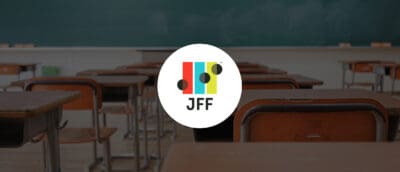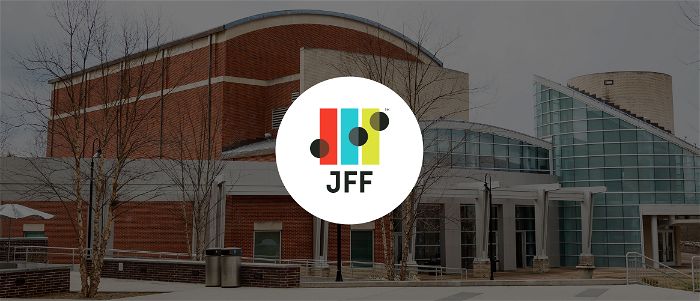

This Crisis in Learning Requires Lasting Solutions
March 31, 2020
At a Glance
Strategies to address extensive learning loss caused by COVID-19-related school closures should aim to permanently strengthen educational opportunities for low-income students.
COVID-19 is on course to cause a damaging loss of learning for millions of schoolchildren and older adolescents. Most states have canceled school at least through early May, and seven have already closed for the rest of the academic year. With summer vacation around the corner—and the harmful effects of summer learning loss well-documented—the current crisis surely will extend the damage.
I especially worry about the learning of low-income youth in our K-12 systems. They are particularly susceptible to summer learning loss, having less access to out-of-school enrichment experiences. Moreover, this may prove to be quite a stark setback for low-income high school students who already struggle to prepare for and succeed in postsecondary education and earn the credentials required to get good jobs that pay family-supporting wages.
We’ll be looking at an educational crisis for low-income students who will arrive for school in the fall with about half a year of learning loss.
It would be remiss to dismiss the heroic efforts teachers and school systems are making to stem these losses by pivoting so quickly to online and other forms of remote learning, not to mention the homeschooling that parents are taking on. Yet, I’m also aware of the relative lack of access to tech tools and bandwidth among low-income (including rural) students whose parents may not be in a strong position to do homeschooling. This is not to mention how sheltering in place is isolating everyone—making it difficult for all of us to maintain and cultivate social networks and social capital—and creating segregation that weakens economic mobility for low-income people and undercuts the strength of our collective diversity.
These Worries Are Making Me Think that . . .
. . . We Can’t Let This Happen
Even if we’re through the immediate health crisis by summer, we will be looking at an educational crisis for low-income students who will arrive for school in the fall with about half a year of learning loss. Learning gaps by income could widen, because upper-income students could conceivably maintain or even accelerate learning gains during the schooling lull, since they are likely to live in well-educated households and have better access to technology and enrichment experiences than their lower-income classmates.
Holding summer school sessions may be one strategy to lower these risks, but we must also engage low-income youth outside school walls and expand their learning and social networks. We could use this moment to marshal, strengthen, and expand the capacity of our country’s strongest summer and after-school enrichment programs, summer jobs, community service, and mentoring programs—especially those serving low-income youth.
At a time when these types of programs, typically run by nonprofits, should become more vital to learning in communities, they will be fighting to survive an expected economic recession. Private and public funding should expand access and bolster the ability of such programs to foster learning by building on the strong social bonds they create with and among young people.
. . . Effective Innovations Cannot Fall by the Wayside
A recession will spur a scarcity mindset, and it will be easy for systems to stop efforts not considered core enterprises even though they improve student learning. For example, promising innovations and partnerships have emerged that embed low-income high school students in new social networks and deepen their learning and footing in the future through work-based learning experiences with local employers, and through early college and dual enrollment programs. Even though high schools, colleges, and employers will all be feeling the financial pinch of a recession, they should strive for more partnerships to make these evidence-based strategies integral to improving educational and employment outcomes.
. . . We Need to Think Bigger About Learning
This crisis has shown that our education systems cannot carry out the work of learning alone, especially when we’re moving toward a future of work that will require continuous lifelong learning. A pandemic is a dramatic event, and whether or not one comes again, the COVID-19 crisis has shown how reliant we are on physical schools as the place where young people “get their learning.” We certainly have gained a new appreciation in the crisis for what goes on in schools and the role schooling plays in communities and the economy, and policymakers must invest commensurately.
But schools alone cannot prepare citizens and workers to adapt to such shocks to the economy and the workforce—from pandemics or otherwise. Automation and artificial intelligence are already reshaping work and speeding job creation—and job obsolescence. Learning cannot stop at the K-12 or postsecondary stage. It will need to be accessible, activated, and supported in multiple places and modalities: in the workplace, online, or via community-based organizations, professional associations, and other networks.
This crisis has shown that our education systems cannot carry out the work of learning alone.
Creating a future of learning aligned with the future of work—that applies lessons learned from the current crisis—requires at least two strategies:
- Unprecedented and coordinated investments in technological infrastructure to reach those who have inadequate access to digital tools and networks, and to ensure that tech tools enhance good pedagogy and experiential learning. This is a goal that will become more realistic with every new advance in augmented reality and virtual reality technologies.
- Learning that is embedded in, and validated by, a wide array of asset-rich environments, such as libraries, museums, extracurricular programs, and workplaces. This will require building new partnerships with and beyond schools, and it will mean coaching people in those settings to view and organize their work with more intentionality and discipline around their learning and that of others.

